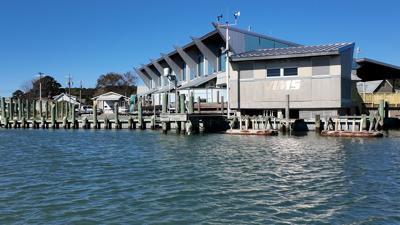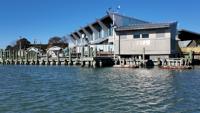WACHAPREAGUE, VA - The bay scallop population in the waters of Virginia's Eastern Shore is trending upwards after years of local extinction.
Bay scallops in the area were plentiful before an eelgrass disease decimated the habitat, causing the population to decline. A massive hurricane in the 1930s wiped out the bay scallops for approximately 90 years.
Researchers at the Virginia Institute of Marine Science Eastern Shore Laboratory have been working to restore the shellfish species since 2009. A survey of the scallop population taken this summer shows promising results.
"We saw that our population has now reached what Florida considers to be a stable population and that's defined by having more than 0.01 scallops per meter squared," Hatchery Manager Reba Turner-Smith said. "So, we've just barely exceeded that level and hope that the trajectory will only continue."
Turner-Smith oversees the scallops in their earliest stages of life, spawning adult shellfish to collect embryos that she helps grow.
"I will get cell counts and density counts of these algal cultures, then feed tailored rations of that algae to my larval cultures," Turner-Smith said.
Nursery Manager Darian Kelley takes over their care when the scallops are ready for metamorphosis.
Creek water flows through tanks, introducing the scallops to the plankton and algae they would encounter in the wild. After about 50 to 60 additional days of growth, the scallops are deployed into the bay in cages to protect them from predators as they mature.
"Each year we see more and more and it's very rewarding to be a part of that and to see the scallops starting to grow and proliferate in their own," Kelley said.
A self-sustaining population is a step towards a recreational fishery, which Kelley said would allow locals to enjoy scallops alongside the other shellfish off Virginia's Eastern Shore.
Although commercial scallop harvesting would be further away, the Wachapreague effort has already piqued the interest of working watermen.
Grant funding has allowed researchers to share scallop seed with local growers, who frequently share their results.
"Local established shellfish growers that are growing oysters and clams already, they can take the seed for free and try whatever techniques that they want with no risk," Kelley said. "Then they typically will give us data and let us know how their techniques worked or didn't work for the bay scallops."
Bay scallops only live for an average of 1.5 years, making the population vulnerable to environmental changes. Still, researchers at the Virginia Institute of Marine Sciences Eastern Shore Laboratory said they remain optimistic about the future of a wild bay scallop population off the Eastern Shore.



